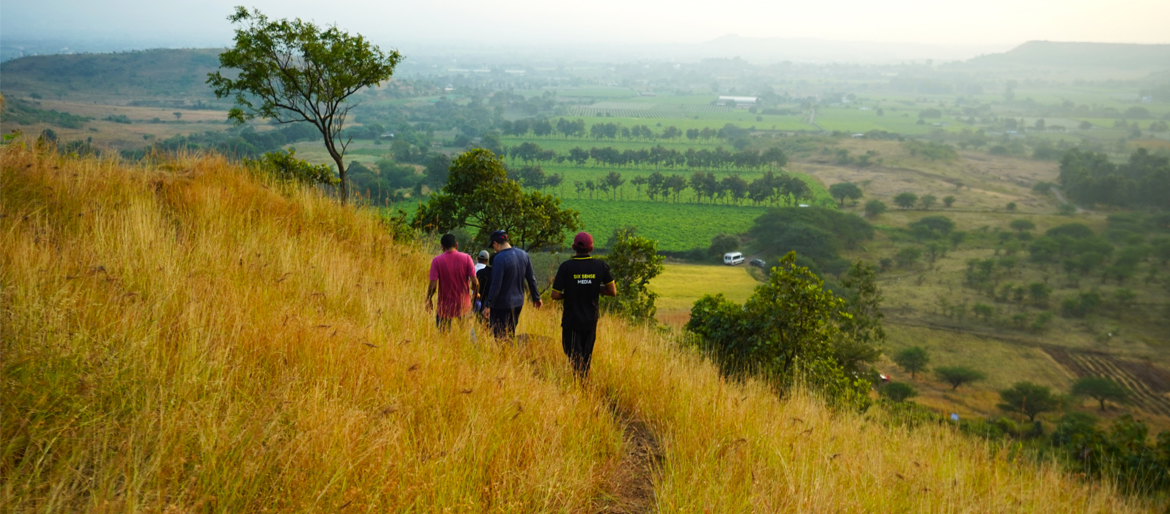A Call of the Mountains! Article 1: Should we Really Worry?
“Should we Really worry?”
I wonder where the green grass went,
All buried under the new cement.
I wonder where the birds have flown,
They have gone to find another home.
India’s most loved storyteller Ruskin Bond couldn’t resist writing these lines about the
environmental loss, but Should We Really Worry?
Mountain ecosystems are highly sensitive to climate change, as they have a delicate balance of flora and fauna, and unique topography. These ecosystems, often referred to as ‘Water Towers’, provide resources that directly or indirectly benefit billions of people. Mountains also offer vital ‘Ecosystem Services’. However, the escalating changes in climate patterns that are irreversible are posing severe threats to the delicate balance of mountain ecosystems. These changes are triggering cascading effects on biodiversity, water availability, and human livelihoods.
Can we sense the Altered Temperature & Precipitation Patterns?
Climate change is altering temperature and precipitation patterns in mountainous regions at an accelerated pace. Glaciers are melting and downstream freshwater quantity is being affected. No doubt, the timing and quality of water is also compromised. Both biotic and abiotic components are facing consequences of the same. As a result, these alterations disrupt the natural hydrological cycle, leading to erratic water flows, increased risks of flooding, and ultimately, water scarcity in lower-lying areas during crucial periods. And what about the ‘life’ dependent on the water? Is it reproducing at the natural rate?
I believe that the natural Carrying Capacity of each microhabitat is being impacted!
What is the reason to worry about Biodiversity?
Mountains are known for their diverse gradients, which support a variety of keystone and flagship species. These species provide habitats for many dependent floral and faunal species, and their adaptability to specific altitudes, climates, and microhabitats makes these associations possible. However, with changing climate conditions, many species are forced to migrate permanently as they fail to survive in new climatic conditions. This results in habitat fragmentation and ultimately a loss of biodiversity.
Is it possible to ‘compute the worth’ of Ecosystem Services?
Mountain ecosystems are crucial for providing important services such as freshwater supply, carbon storage, and regulation of downstream water flow. However, the deterioration of these habitats can negatively impact these services, resulting in a decline in water quality, reduced agricultural productivity, and increased susceptibility to natural disasters like landslides and flash floods.
Additionally, the release of stored carbon from thawing permafrost and degraded vegetation can worsen global warming, creating a feedback loop that further accelerates climate change.
How are livelihoods and local communities being impacted?
The diversity of plants is crucial for the ‘conservation’ of Non-timber Forest Produce (NTFP), which is a primary source of income for tribal communities. These tribal communities, particularly those residing in mountain regions, rely heavily on these ecosystems for their livelihoods, including agriculture, tourism, and traditional practices.
The alterations in precipitation patterns and loss of biodiversity directly impact their food security, economic stability, and cultural heritage. Indigenous peoples face a grave threat of losing their ancestral lands and traditions due to the changing landscape and diminishing resources.
Could we alter the situation?
Efforts to minimize the impact of climate change on mountain ecosystems require global cooperation and decisive actions. It is crucial to implement policies that reduce greenhouse gas emissions, preserve and restore degraded habitats, promote sustainable land management practices, and support indigenous knowledge and community-based adaptation strategies.
Besides, enhancing scientific research and monitoring systems can aid in understanding and predicting the changes, facilitating proactive measures to safeguard these vulnerable ecosystems.
So…should we really worry? Guess, you have the answer!
The author of this article is Mr Rishikesh Patil, VP – Ecological Restoration at Raah Foundation

